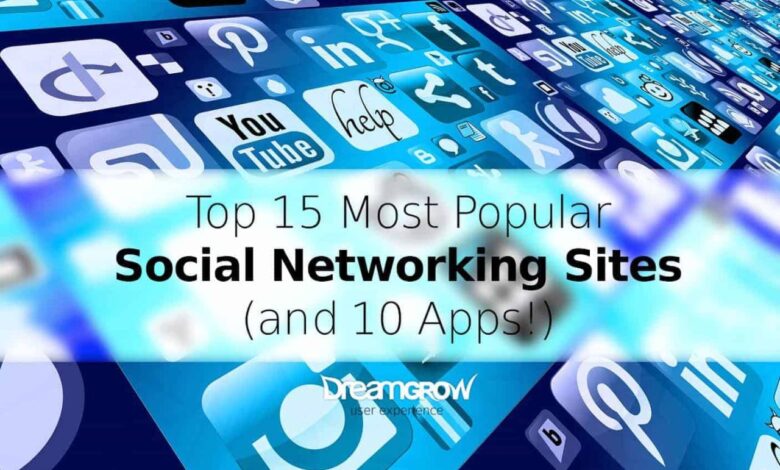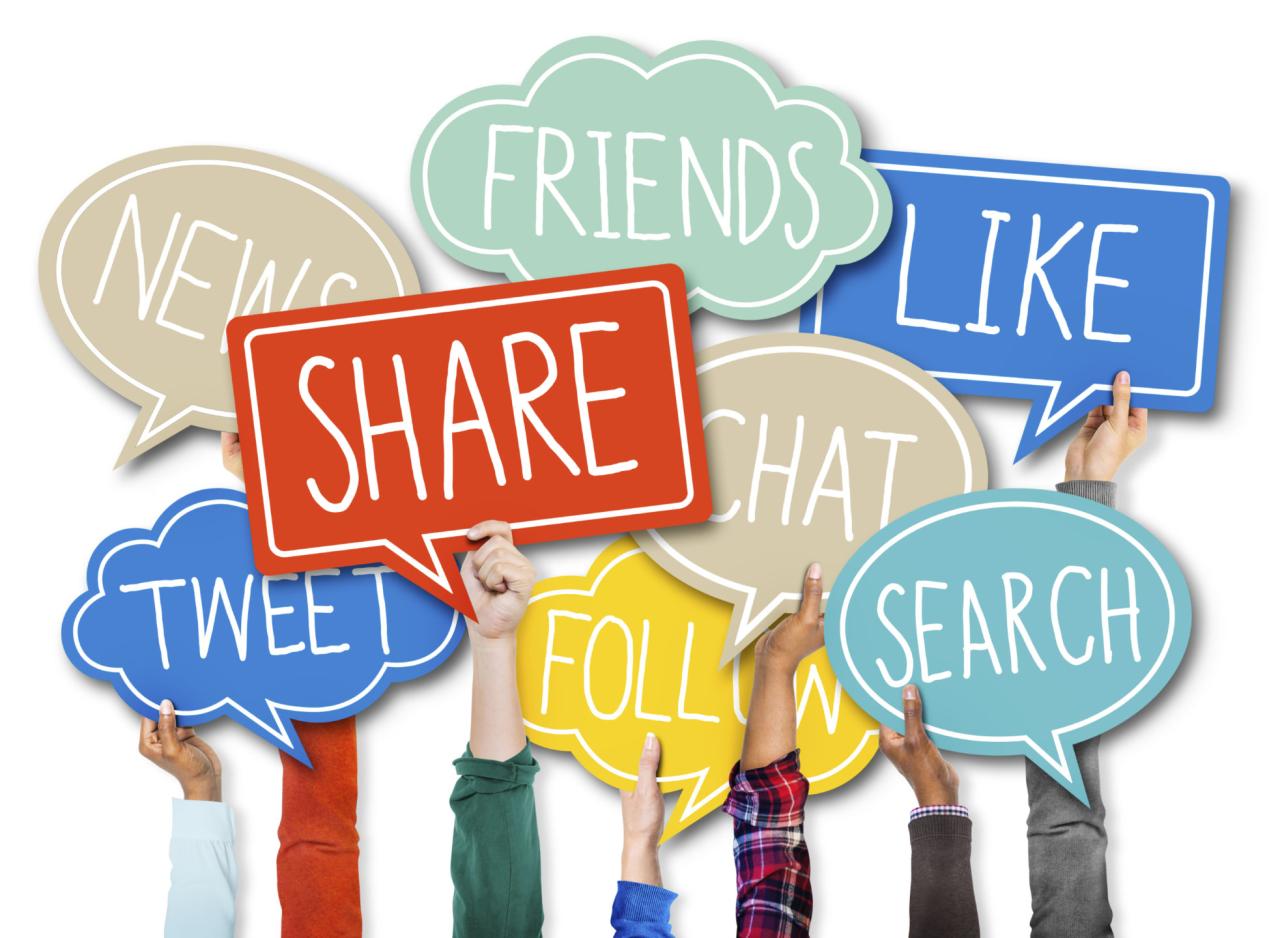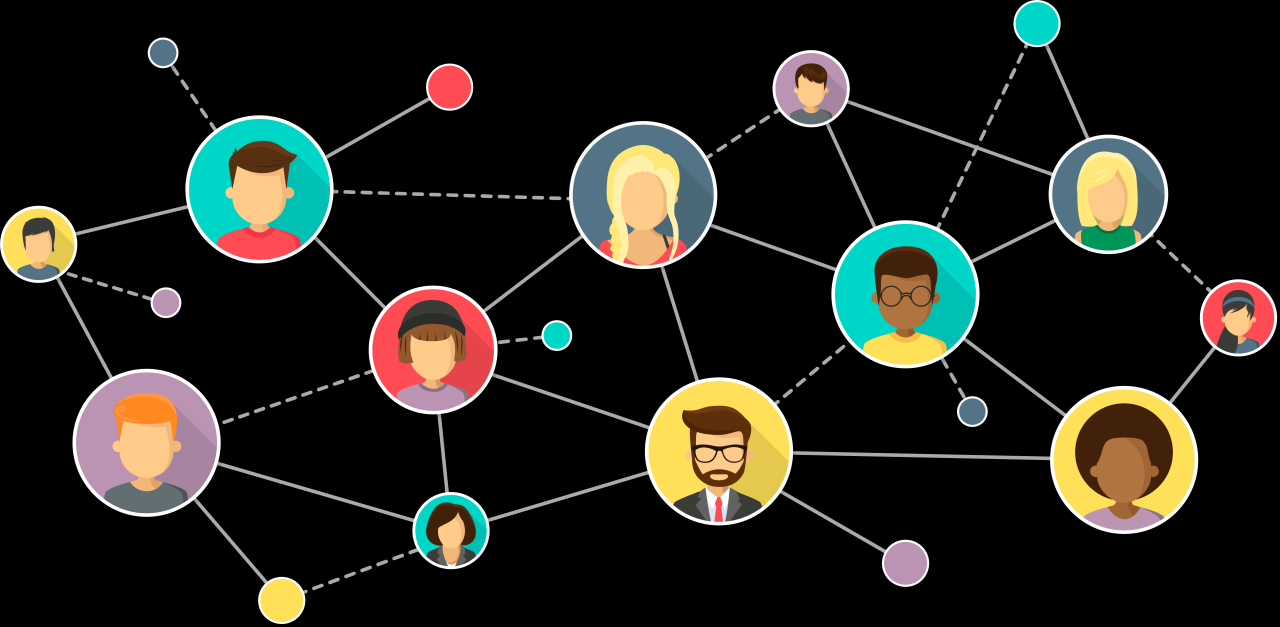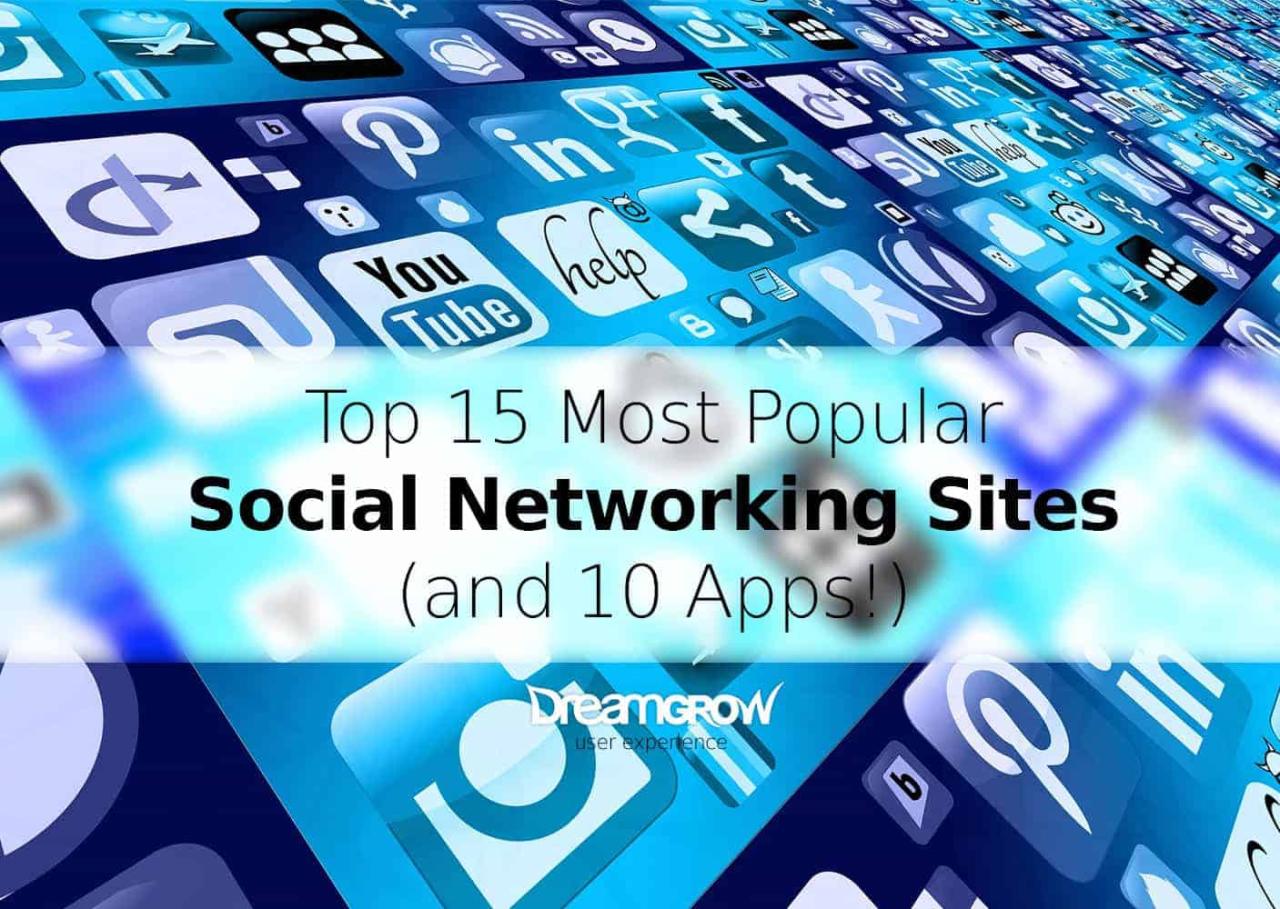
What Exactly Is Social Networking and Social Media?
What exactly is social networking and social media? It’s a question many of us ponder, especially given their pervasive influence on our daily lives. We’re constantly bombarded with updates, notifications, and trending hashtags, but understanding the fundamental differences between these two intertwined concepts – social networking and social media – is key to navigating this digital landscape effectively.
This post will delve into the core functionalities, societal impact, and future trends of both, unraveling the complexities of our online interactions.
From the early days of bulletin board systems to the sophisticated algorithms driving today’s platforms, the evolution of social networking and social media has been nothing short of remarkable. We’ll explore how these platforms have changed the way we communicate, build relationships, and even participate in political discourse. We’ll also tackle the ethical dilemmas surrounding data privacy, online safety, and the potential for misuse.
Get ready to unpack the power – and the perils – of the digital world we inhabit.
Defining Social Networking and Social Media
The terms “social networking” and “social media” are often used interchangeably, but there are subtle yet significant differences between them. Understanding these distinctions helps clarify the impact these technologies have on our lives and how they’ve reshaped communication. Essentially, social networking is the foundation upon which social media is built.Social networking focuses on building and maintaining relationships. It’s about connecting with people who share common interests, backgrounds, or goals.
So, what exactly is social networking and social media? It’s basically the way we connect and share online, right? A huge part of that is video, and mastering that aspect is key – which is why I found this guide on getting it on with youtube incredibly helpful. Understanding how to leverage platforms like YouTube directly impacts your overall social media strategy, because it’s a powerful tool for building your online presence and engaging your audience within the broader context of social networking.
Social media, on the other hand, is thetool* used to facilitate these connections. It encompasses the various platforms and technologies that enable social interaction, content sharing, and community building. Think of social networking as the concept and social media as the application.
Core Differences Between Social Networking and Social Media
Social networking prioritizes relationship building and community formation. It emphasizes the quality of connections over the quantity of interactions. Social media, conversely, emphasizes content creation and distribution. It prioritizes the reach and visibility of content, even if it means less meaningful interaction. The focus shifts from deep relationships to broader audience engagement.
Examples of Social Networking and Social Media Platforms
Platforms that primarily function as social networks often focus on connecting users based on shared interests or professional backgrounds. LinkedIn, for example, is built around professional networking, enabling users to connect with colleagues, potential employers, and industry experts. In contrast, platforms like Facebook and Instagram are primarily social media platforms, prioritizing content sharing, updates, and broadcasting information to a wider audience.
While they certainly facilitate networking, their core functionality revolves around content consumption and dissemination. Twitter, while used for networking, also emphasizes the quick dissemination of information and public discourse, making it more social media-focused.
Evolution of Social Networking and Social Media
The evolution of social networking and social media has been rapid and transformative. Early platforms like SixDegrees.com (launched in 1997) laid the groundwork for online social interaction, allowing users to create profiles and connect with others. The rise of MySpace and Friendster in the early 2000s brought social networking to the mainstream, focusing on profiles, friend lists, and personal messaging.
Facebook’s emergence marked a pivotal moment, transforming social networking into a ubiquitous phenomenon, integrating news feeds, photo sharing, and applications. Subsequently, the rise of platforms like Twitter, Instagram, and TikTok expanded the scope of social media, emphasizing microblogging, visual content, and short-form video, respectively. Each iteration built upon previous innovations, leading to the sophisticated and multifaceted social media landscape we see today.
Impact of Social Networks Versus Social Media on Communication
Social networks have fostered deeper, more meaningful connections, particularly within niche communities and professional fields. They have facilitated the formation of strong ties, leading to enhanced collaboration and support systems. Social media, however, has broadened the reach of communication, allowing individuals and organizations to connect with vast audiences. While it has democratized information sharing and enabled rapid dissemination of news and ideas, it has also contributed to the spread of misinformation and the erosion of privacy.
Social networks tend to build stronger, more intimate relationships, while social media can create a more superficial but far-reaching network. The impact on communication is therefore multifaceted, with both positive and negative consequences.
Key Features and Functionality

Source: co.uk
Social networking and social media platforms, while diverse in their specific offerings, share a core set of features that drive their popularity and influence. Understanding these fundamental elements is crucial to grasping their impact on our lives and the broader digital landscape. These features, combined with sophisticated algorithms, shape the user experience and dictate how information is shared and consumed.
The essential features underpinning most platforms revolve around creating and maintaining profiles, connecting with others, sharing content, and engaging in various forms of interaction. These seemingly simple functions are powered by complex algorithms that personalize the experience, often subtly influencing what users see and how they interact. This personalization, while enhancing convenience, also raises important questions about algorithmic bias and the potential for filter bubbles.
Essential Features of Social Media Platforms, What exactly is social networking and social media
The most common features found across various platforms include user profiles, which act as digital identities; friend or follower systems, enabling connection and the formation of networks; news feeds or timelines, displaying content from connected users; private messaging systems for direct communication; and content creation tools, allowing users to share text, images, videos, and other media. Many platforms also incorporate features like groups, events, and live streaming, expanding the scope of interaction and community building.
The Role of Algorithms in Shaping User Experience
Algorithms are the invisible engines driving the user experience on social media. These complex sets of rules and processes determine what content users see in their feeds, which suggestions are presented, and even the order of comments. For example, Facebook’s algorithm prioritizes content from friends and family, while also factoring in user engagement, post recency, and other variables.
This creates a personalized experience, but it can also lead to echo chambers, where users are primarily exposed to information confirming their existing beliefs. The constant evolution of these algorithms makes it challenging to fully understand their impact on information consumption and social interaction.
Types of User Interactions on Social Networks and Social Media
User interactions are the lifeblood of social media platforms. These interactions can be categorized into several key types, each contributing to the dynamic nature of these online spaces. These range from simple likes and comments to more complex forms of engagement such as sharing, tagging, and participating in group discussions. The diversity of interaction methods fosters a sense of community and facilitates the rapid spread of information and ideas.
Comparison of Social Media Platforms
To illustrate the variations in features across different platforms, consider the following comparison of three popular services:
| Platform Name | Primary Function | User Interaction Methods | Data Privacy Features |
|---|---|---|---|
| Connecting with friends and family, sharing updates, joining groups | Liking, commenting, sharing, messaging, reacting, joining groups, events | Privacy settings for posts, profile information, and ad targeting | |
| Sharing short messages (tweets), engaging in public conversations | Tweeting, retweeting, replying, following, direct messaging | Privacy settings for tweets, follower lists, and direct messages | |
| Sharing photos and videos, building a visual portfolio | Liking, commenting, sharing, messaging, following, using hashtags, stories | Privacy settings for posts, profile information, and story viewers |
Social Interactions and Relationships
Social networking and social media platforms have fundamentally reshaped how we interact and build relationships. These platforms offer unprecedented opportunities to connect with people across geographical boundaries and maintain contact with existing networks, but they also present unique challenges to the nature of human connection. Understanding these impacts is crucial to navigating the digital age effectively.Social networking sites and social media apps facilitate relationship formation and maintenance through various features.
The ability to easily share updates, photos, and videos allows individuals to stay connected with friends and family, even across long distances. Shared interests, groups, and online communities bring like-minded individuals together, fostering new relationships based on common passions or goals. Direct messaging, video calls, and live streaming functionalities further enhance the intimacy and immediacy of online interactions.
Online versus Offline Relationships
Online relationships, while often beginning with limited face-to-face interaction, can evolve into deep and meaningful connections. However, the absence of physical presence introduces unique dynamics. Nonverbal cues are often minimized, leading to potential misunderstandings. The curated nature of online profiles can create idealized perceptions of individuals, leading to disappointment when offline interactions occur. Conversely, online platforms can offer a safe space for individuals to explore their identities and build relationships that might be challenging to initiate offline due to social anxiety or other barriers.
The strength and quality of both online and offline relationships depend on factors like communication, trust, mutual respect, and shared experiences, albeit expressed through different mediums.
Social Media’s Impact on Social Capital and Community Building
Social media’s impact on social capital—the networks of relationships among people who live and work in a particular society, enabling that society to function effectively—is complex. While platforms can strengthen existing ties and facilitate the creation of new ones, they can also lead to a phenomenon known as “weak ties,” where numerous superficial connections replace fewer, stronger relationships. The ability to connect with like-minded individuals across geographical boundaries can foster the growth of online communities centered around shared interests, hobbies, or causes.
However, the echo chambers created by algorithmic filtering can also limit exposure to diverse perspectives and hinder genuine community building based on open dialogue and mutual understanding. The potential for online harassment and polarization also poses a significant threat to the positive aspects of online community building.
Positive and Negative Effects of Social Media on Interpersonal Relationships
The impact of social media on interpersonal relationships is multifaceted, encompassing both positive and negative consequences.
- Positive Effects: Increased connectivity, easier maintenance of long-distance relationships, formation of new relationships based on shared interests, access to support networks, opportunities for community building around shared causes.
- Negative Effects: Superficial relationships, comparison and competition, cyberbullying and harassment, privacy concerns, potential for addiction and decreased face-to-face interaction, spread of misinformation and polarization, unrealistic expectations based on curated online personas.
The Impact of Social Media on Society

Source: sofronomedia.com
Social media’s pervasive influence has profoundly reshaped societal structures, communication patterns, and political landscapes. Its double-edged sword nature presents both remarkable opportunities for progress and significant risks to social cohesion and individual well-being. Understanding this complex impact is crucial for navigating the evolving digital world.Social media platforms have become integral to modern political discourse and social movements, facilitating rapid information dissemination and mobilization.
Social Media’s Influence on Political Discourse and Social Movements
The Arab Spring uprisings serve as a powerful example of social media’s role in catalyzing social change. Platforms like Twitter and Facebook enabled activists to organize protests, share information about government crackdowns, and bypass traditional media censorship. This rapid, decentralized communication helped mobilize large-scale demonstrations across several North African and Middle Eastern countries. Conversely, social media has also been used to spread disinformation and propaganda, influencing elections and fueling political polarization.
The spread of fake news and targeted advertising campaigns during the 2016 US Presidential election demonstrated the potential for malicious actors to manipulate public opinion through social media. The ability to create and share viral content, regardless of its veracity, presents a significant challenge to democratic processes.
Social Media’s Use in Promoting Social Change and Raising Awareness
Numerous social movements have leveraged social media to amplify their messages and mobilize support. The #MeToo movement, for example, utilized social media platforms to share personal stories of sexual harassment and assault, creating a global conversation and raising awareness about widespread issues of gender inequality. Similarly, campaigns advocating for climate action, LGBTQ+ rights, and racial justice have utilized social media to organize events, raise funds, and build communities of support.
The visual nature of platforms like Instagram and TikTok has been particularly effective in disseminating powerful imagery and emotionally resonant narratives, garnering widespread attention and prompting meaningful dialogue.
Misinformation and the Spread of Propaganda on Social Media
The ease with which misinformation and propaganda can spread on social media poses a significant threat to informed public discourse and social cohesion. Algorithms designed to maximize engagement often prioritize sensational and emotionally charged content, regardless of its accuracy. This creates an environment where false narratives can quickly go viral, potentially influencing public opinion and shaping political outcomes.
The lack of robust fact-checking mechanisms and the prevalence of “echo chambers,” where individuals are primarily exposed to information confirming their existing biases, further exacerbate the problem. The Cambridge Analytica scandal highlighted the vulnerability of social media users to data harvesting and the manipulation of personal information for political advertising purposes.
Hypothetical Scenario: Impact of a Major Social Media Platform on a Rural Community
Imagine a hypothetical scenario where a major social media platform, “Connectville,” is introduced to a small, isolated rural community. Initially, Connectville facilitates positive impacts: farmers can connect with buyers directly, bypassing middlemen and increasing their income; residents can access vital information about local events and services; and individuals can maintain contact with family and friends who have migrated to urban areas.
However, over time, negative consequences emerge. The platform becomes a breeding ground for local gossip and rumors, fracturing community relationships; young people become increasingly isolated from real-world interactions, prioritizing online engagement over face-to-face connections; and the spread of misinformation about local health initiatives leads to decreased vaccination rates and public health crises. This hypothetical scenario illustrates how the same platform can have both positive and negative impacts depending on how it’s used and the context in which it’s introduced.
The key takeaway is the necessity for responsible platform governance and media literacy education to mitigate the potential harms while maximizing the benefits of social media.
Ethical and Societal Concerns

Source: dreamgrow.com
The seemingly boundless connectivity offered by social media presents a complex tapestry of ethical dilemmas and societal challenges. While connecting billions globally, these platforms also raise significant concerns about privacy, safety, and mental well-being, demanding careful consideration and proactive solutions. The rapid evolution of technology often outpaces the development of robust ethical frameworks, leaving individuals and societies grappling with unforeseen consequences.
Data Privacy and User Surveillance
Social media platforms amass vast quantities of user data, ranging from personal information and browsing history to location data and social interactions. This data collection, often conducted without fully transparent consent, raises serious ethical concerns about privacy violation. The potential for misuse of this data, including targeted advertising, political manipulation, and even identity theft, is significant. Surveillance practices, such as tracking user activity across multiple platforms and analyzing user behavior to predict future actions, further exacerbate these concerns.
The lack of comprehensive data protection regulations and the often opaque data-sharing practices of social media companies contribute to this pervasive problem. For example, the Cambridge Analytica scandal highlighted the vulnerability of user data and the potential for its exploitation in influencing elections.
Cyberbullying, Online Harassment, and Hate Speech
The anonymity and scale of social media platforms can embolden harmful behavior. Cyberbullying, online harassment, and the spread of hate speech are rampant, causing significant emotional distress and even physical harm to victims. The ease with which inflammatory content can be shared and amplified, often with little or no consequence, contributes to the proliferation of these harmful activities. The lack of effective mechanisms for reporting and removing abusive content, coupled with the challenges of identifying and prosecuting perpetrators, creates a permissive environment for such behavior.
The impact on victims can be devastating, leading to anxiety, depression, and even suicidal thoughts. Examples include online shaming campaigns that target individuals based on their race, religion, or sexual orientation, leading to real-world consequences.
Role of Social Media Companies in Content Moderation
Social media companies bear a significant responsibility in moderating content and addressing harmful behavior on their platforms. This involves developing and implementing effective mechanisms for identifying and removing abusive content, including hate speech, cyberbullying, and misinformation. However, striking a balance between freedom of speech and the need to protect users from harm presents a complex challenge. The sheer volume of content generated daily makes manual moderation impractical, requiring the development of sophisticated algorithms and artificial intelligence tools.
These tools, however, are not without flaws and can inadvertently censor legitimate speech or fail to identify harmful content. Furthermore, the question of who decides what constitutes harmful content and how these decisions are made remains a point of contention. Transparency in content moderation policies and processes is crucial to build user trust and accountability.
Psychological Effects of Excessive Social Media Use
Excessive social media use can have profound negative effects on mental well-being, particularly self-esteem. The curated and often unrealistic portrayals of others’ lives on social media can lead to social comparison and feelings of inadequacy. Constantly scrolling through feeds filled with seemingly perfect images and achievements can fuel feelings of envy, low self-worth, and anxiety. Furthermore, the constant need for validation through likes and comments can create a dependence on external approval, hindering the development of healthy self-esteem.
The addictive nature of social media, with its constant stream of notifications and updates, can disrupt sleep patterns, leading to fatigue and impacting cognitive function. This can manifest as symptoms of depression, anxiety, and body image issues, particularly among young people who are heavily exposed to idealized representations of beauty and success. Imagine a young person constantly comparing their own life to the seemingly perfect lives presented on Instagram, leading to feelings of inadequacy and depression.
This constant exposure can lead to a distorted perception of reality and a decrease in overall happiness and life satisfaction.
Future Trends and Developments
The landscape of social networking and social media is in constant flux, driven by technological advancements and evolving user behaviors. Predicting the future is inherently uncertain, but by examining current trends and emerging technologies, we can glimpse potential pathways for social media’s evolution. This includes a shift towards immersive experiences, decentralized control, and the increasing influence of artificial intelligence.The integration of artificial intelligence (AI) and augmented reality (AR) technologies will fundamentally reshape how we interact with social media.
These technologies are already transforming how content is created, curated, and consumed.
The Metaverse and Immersive Social Experiences
The metaverse promises a more immersive and interactive social experience. Imagine attending a virtual concert with friends from across the globe, feeling like you’re truly present in the same space, or collaborating on a project in a shared virtual workspace. Platforms like Meta (formerly Facebook) are heavily investing in this technology, aiming to create persistent virtual worlds where users can socialize, work, and play.
This shift will likely lead to new forms of social interaction and community building, transcending geographical limitations. The success of this, however, hinges on overcoming technical challenges related to accessibility, affordability, and user experience. The development of more realistic avatars and intuitive interfaces will be crucial for widespread adoption.
Decentralized Social Media Platforms
Concerns about data privacy, censorship, and algorithmic bias have fueled the rise of decentralized social media platforms. These platforms utilize blockchain technology and distributed ledger systems to give users more control over their data and content. Examples include Mastodon and Diaspora*, which offer alternative approaches to centralized platforms like Facebook and Twitter. While these platforms have gained traction among privacy-conscious users, their widespread adoption faces challenges in terms of user experience and scalability.
The challenge lies in balancing decentralization with the need for effective moderation and content management. The ability to build and maintain robust communities within these decentralized structures remains a significant hurdle.
Artificial Intelligence in Social Media
AI is already playing a significant role in shaping social media, from personalized content recommendations to automated content moderation. In the future, AI will likely become even more integrated, powering more sophisticated features such as AI-generated content, advanced sentiment analysis, and personalized virtual assistants within social media platforms. For example, AI could help users create more engaging content by suggesting relevant topics, optimizing visuals, or even generating text automatically.
However, the ethical implications of AI-driven content creation and personalization must be carefully considered. Bias in algorithms and the potential for manipulation need to be addressed proactively. The use of AI for automated content moderation raises concerns about censorship and freedom of speech.
Predictive Social Media Analytics
Social media platforms are already using sophisticated analytics to understand user behavior and preferences. In the future, this will become even more advanced, allowing for predictive modeling of trends and potential risks. This could be used to identify potential misinformation campaigns, predict the spread of harmful content, or even anticipate social unrest based on sentiment analysis across platforms. However, the ethical implications of such predictive capabilities must be carefully considered.
The potential for misuse and the need for transparency in algorithmic decision-making are crucial considerations. Balancing predictive analytics with user privacy will be a critical challenge.
Ending Remarks: What Exactly Is Social Networking And Social Media
So, what have we learned? Social networking and social media are powerful tools that have reshaped communication and community building, but they also present significant challenges. Understanding the nuances of these platforms – their functionalities, their impact on our relationships, and their ethical implications – is crucial for navigating the digital age responsibly. As technology continues to evolve, so too will the ways we interact online, demanding our continued attention and critical engagement with this ever-changing landscape.
General Inquiries
What’s the difference between a social network and a social media platform?
Social networks focus on building and maintaining relationships, while social media platforms emphasize content sharing and broadcasting information to a wider audience. Many platforms blend both aspects.
Is social media addictive?
While not clinically classified as an addiction for everyone, excessive social media use can lead to compulsive behavior and negatively impact mental well-being. The design of many platforms often leverages psychological principles to keep users engaged.
How can I protect my privacy on social media?
Regularly review your privacy settings, be mindful of the information you share, and be cautious about third-party apps accessing your data. Consider using strong passwords and enabling two-factor authentication.
What are the long-term effects of social media on mental health?
Studies suggest links between excessive social media use and increased anxiety, depression, and body image issues, particularly among young people. However, responsible use and mindful engagement can mitigate these risks.




